Understanding ‘Wellness’ in Modern Health Trends
Explore the evolving meaning of wellness in today’s health trends. Discover insights and redefine your path to well-being. Read more today!
The Evolving Definition of Wellness
Historical Context
The concept of wellness has undergone significant transformation over the decades. Originally, wellness was primarily associated with the absence of illness and the maintenance of physical health.
In the early 20th century, the focus was largely on hygiene, nutrition, and exercise as the primary components of a healthy lifestyle.
As medical science advanced, the definition expanded to include mental health, recognizing the impact of stress and emotional well-being on overall health. This shift marked the beginning of a more holistic approach to wellness, integrating both physical and mental health considerations.
Modern Interpretations
In recent years, the definition of wellness has further evolved to encompass a wide range of dimensions, including emotional, social, intellectual, and even spiritual well-being.
This broader perspective recognizes that wellness is not merely the absence of disease but a dynamic process of change and growth.
Today, wellness is often seen as a multi-dimensional state of being, where individuals actively pursue a lifestyle that promotes health, happiness, and fulfillment. This modern interpretation encourages personal responsibility and proactive measures to achieve balance in various aspects of life.
The Role of Technology
Technology has played a significant role in reshaping the definition of wellness.
With the advent of fitness trackers, wellness apps, and telehealth services, individuals now have unprecedented access to tools that facilitate self-monitoring and health management.
These technological advancements have democratized wellness, making it more accessible to a broader audience. However, they have also introduced new challenges, such as data privacy concerns and the potential for information overload, which can complicate the pursuit of genuine well-being.
Commercialization and Its Impact
The commercialization of wellness has further complicated its definition.
The booming wellness industry, encompassing everything from organic foods to luxury retreats, has blurred the lines between genuine health practices and consumerism.
While this commercialization has increased awareness and availability of wellness products and services, it has also led to skepticism and confusion about what truly constitutes wellness. The challenge lies in discerning between marketing hype and evidence-based practices that genuinely contribute to well-being.
Personalized Wellness
As the definition of wellness continues to evolve, there is a growing emphasis on personalized wellness.
Recognizing that each individual’s path to well-being is unique, personalized wellness approaches tailor strategies to fit personal needs, preferences, and circumstances.
This personalized approach acknowledges the diversity of human experiences and the importance of cultural, social, and individual factors in shaping one’s wellness journey. It empowers individuals to define what wellness means to them, fostering a more inclusive and adaptable understanding of the concept.
Confusion Surrounding Wellness Terminology
Ambiguity in Definitions
The term “wellness” has become a catch-all phrase that lacks a universally accepted definition.
Originally, it was associated with holistic health practices that encompass physical, mental, and social well-being. However, as the wellness industry has grown, the term has been co-opted by various sectors, each interpreting it differently.
This has led to a dilution of its meaning, causing confusion among consumers who are unsure of what wellness truly entails.
Marketing and Commercialization
With the rise of the wellness industry, many companies have jumped on the bandwagon, using the term to market products and services. From wellness teas to wellness retreats, the term is often used more as a marketing buzzword than a descriptor of genuine health benefits.
This commercialization has contributed to the ambiguity, as consumers are bombarded with products labeled as promoting wellness without clear explanations of how they achieve this.
Overlap with Other Health Concepts
Wellness frequently overlaps with other health-related terms such as fitness, health, and self-care, further muddying the waters. While fitness focuses on physical activity and health often refers to the absence of illness, wellness is supposed to be a broader concept that includes emotional and mental well-being.
However, the lines between these terms are often blurred, leading to a lack of clarity about what distinguishes wellness from these other concepts.
Cultural and Individual Interpretations
Individual and cultural differences add another layer of complexity to the understanding of wellness. What constitutes wellness can vary significantly from one person to another, influenced by cultural norms, personal beliefs, and individual health goals.
For some, wellness might mean practicing yoga and meditation, while for others, it could involve regular medical check-ups and a balanced diet. This subjective nature makes it challenging to pin down a single, comprehensive definition that applies universally.
The Role of Social Media
Social media platforms have played a significant role in shaping and sometimes distorting the concept of wellness.
Influencers and brands often portray wellness as an aspirational lifestyle, characterized by luxury products and exclusive experiences. This portrayal can create unrealistic expectations and pressure to conform to a certain image of wellness, which may not be attainable or even healthy for everyone.
As a result, the true essence of wellness, which should be inclusive and accessible, is often overshadowed by its glamorous depiction online.
Wellness Industry Trends and Misconceptions
Emerging Trends in the Wellness Industry
The wellness industry has experienced significant growth, with new trends continuously reshaping its landscape. One of the most notable trends is the integration of technology into wellness practices.
From wearable fitness trackers to meditation apps, technology is making wellness more accessible and personalized. Additionally, there is a growing emphasis on holistic health, which considers mental, physical, and emotional well-being as interconnected aspects of a person’s overall health.
Another trend is the rise of personalized wellness solutions.
Consumers are increasingly seeking tailored approaches that cater to their unique needs and preferences. This has led to the popularity of DNA-based fitness and nutrition plans, which promise to optimize health outcomes based on individual genetic profiles.
Furthermore, sustainability is becoming a key focus, with eco-friendly products and practices gaining traction among health-conscious consumers.
Misconceptions About Wellness
Despite its popularity, the wellness industry is rife with misconceptions. A common misunderstanding is the belief that wellness is synonymous with physical fitness.
While exercise is a critical component, wellness encompasses a broader spectrum, including mental health, nutrition, and social connections. This misconception often leads individuals to neglect other essential aspects of their well-being.
Another prevalent misconception is that wellness requires expensive products and services.
The industry often promotes luxury wellness retreats and high-priced supplements, creating the illusion that wellness is only attainable for the affluent. In reality, many wellness practices, such as mindfulness meditation, yoga, and balanced nutrition, can be pursued at little to no cost.
The Challenge of Defining Wellness
The term “wellness” has become a buzzword, leading to confusion about its true meaning.
This ambiguity stems from the industry’s broad scope, which includes everything from fitness and nutrition to mental health and spiritual well-being. As a result, wellness can mean different things to different people, making it challenging to establish a universal definition.
This lack of clarity can lead to skepticism and mistrust among consumers, who may struggle to discern evidence-based practices from marketing hype.
To navigate this complex landscape, individuals are encouraged to critically evaluate wellness claims and prioritize practices that align with their personal values and health goals.
Redefining Wellness in the Modern Age
The Evolving Definition of Wellness
In recent years, the concept of wellness has expanded beyond traditional notions of physical health. Initially focused on exercise and nutrition, wellness now encompasses a holistic approach that includes mental, emotional, and social well-being.
This evolution reflects a growing understanding that health is multifaceted and interconnected.
With the rise of digital media and the wellness industry, the term “wellness” has been co-opted and commercialized, leading to a dilution of its meaning. Today, it often includes everything from mindfulness practices to luxury spa treatments, making it challenging to pin down a single definition.
The Role of Technology in Wellness
Technology plays a significant role in redefining wellness, offering new tools and platforms for individuals to monitor and improve their health.
Fitness trackers, meditation apps, and telehealth services provide unprecedented access to personal health data and wellness resources. These technologies empower individuals to take control of their health, offering personalized insights and recommendations.
However, reliance on technology also raises questions about privacy, data security, and the potential for information overload.
As individuals navigate these challenges, the definition of wellness continues to evolve, integrating digital well-being as a crucial component.
Inclusivity and Accessibility in Wellness
As the wellness industry grows, there is an increasing emphasis on inclusivity and accessibility. Traditional wellness spaces have often been criticized for being exclusive or catering to a specific demographic.
Modern wellness advocates are pushing for more inclusive practices that consider diverse backgrounds, abilities, and socioeconomic statuses.
Efforts to democratize wellness include community-based initiatives, sliding scale pricing for services, and culturally sensitive wellness programs. These efforts aim to make wellness accessible to all, ensuring that everyone has the opportunity to pursue a healthy and balanced life.
The Future of Wellness
Looking ahead, the future of wellness will likely continue to evolve in response to societal changes and emerging challenges.
Issues such as climate change, global pandemics, and mental health crises are reshaping how individuals and communities approach wellness.
As these challenges unfold, the wellness industry will need to adapt, focusing on resilience, sustainability, and collective well-being. By redefining wellness to meet the needs of the modern age, individuals and communities can foster a more inclusive and holistic approach to health.
FAQ
Q1: How much does it cost to implement “Does Anyone Know What ‘Wellness’ Means Anymore?” in a business setting?
A1: The cost of implementing “Does Anyone Know What ‘Wellness’ Means Anymore?” can vary significantly depending on several factors, such as the size of the organization, the specific wellness components chosen, and the level of customization required. Generally, costs can include initial consultation fees, software or platform subscription fees, and potential costs for training and support. Businesses should also consider the long-term investment in terms of employee engagement and potential productivity improvements. To get a precise estimate, it is advisable to contact the provider directly for a tailored quote that addresses your organization’s specific needs and goals.
Q2: Is “Does Anyone Know What ‘Wellness’ Means Anymore?” accessible for non-engineers and those without a technical background?
A2: Yes, “Does Anyone Know What ‘Wellness’ Means Anymore?” is designed to be accessible to users without a technical background. The platform or program typically includes user-friendly interfaces and comprehensive support resources, such as tutorials, FAQs, and customer service, to assist users in navigating and utilizing the tools effectively. The goal is to make wellness initiatives easily adoptable and manageable by HR teams, managers, and employees themselves, regardless of their technical expertise. Additionally, many providers offer onboarding sessions to ensure that all users are comfortable and confident in using the system.
Q3: What are some common implementation challenges when adopting “Does Anyone Know What ‘Wellness’ Means Anymore,” and how can they be addressed?
A3: Implementing “Does Anyone Know What ‘Wellness’ Means Anymore?” can present several challenges, including resistance to change, integration with existing systems, and ensuring consistent engagement. Resistance to change can be mitigated by involving employees in the selection process and clearly communicating the benefits of the wellness program. Integration challenges can be addressed by working closely with IT teams and choosing a wellness platform that offers compatibility with existing tools and systems. Ensuring consistent engagement may require ongoing communication, incentives, and feedback mechanisms to keep employees motivated and involved. By anticipating these challenges and planning proactively, organizations can facilitate a smoother implementation process.
Takeaway
“Ready to revolutionize your workflow? Try our AI tool today for smarter solutions. Stay ahead of the curve with the latest tech trends – subscribe now. Join our vibrant tech community and be part of the discussion. Time to level up your tech game!” This move is widely interpreted as a strategic response to recent challenges.











Comments